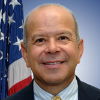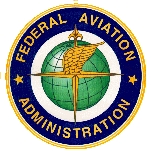U.S. Aviation Security: Before and after the September 11 Terrorist Attacks
(by E. Marla Felcher, Understanding Government)
FAA’s technology division covers all areas of hardware, software and infrastructure that pertain to airport operations. This includes
Advanced Technologies & Oceanic Procedures
;
Airport Surface Detection Equipment
;
;
Federal Telecommunications Infrastructure
;
Integrated Terminal Weather System
; and
Terminal Automation and Replacement
.
|
Northrop Grumman Corporation
|
$185,511,112
|
|
Computer Sciences Corporation
|
$106,314,938
|
|
Sensis Corporation
|
$86,308,798
|
|
TTS Joint Venture
|
$74,229,683
|
|
Management & Engineering Tech Intl.
|
$68,040,442
|
|
Apptis (De), Inc.
|
$65,787,928
|
|
Arinc Incorporated
|
$65,097,614
|
|
The Washington Consulting Group, Inc.
|
$64,733,000
|
|
Torcon, Inc.
|
$63,244,089
|
|
Flint Resources Company, LLC
|
$52,250,045
|
(Business Wire)
(by James Hohmann, Los Angeles Times)
- Table of Contents
- Overview
- History
- What it Does
- Where Does the Money Go
- Controversies
- Suggested Reforms
- Comments
- Leave a comment

In the middle of one of its largest ever projects–the rollout of a new air traffic control system, dubbed “NextGen”–the Federal Aviation Administration (FAA) lost Administrator Randy Babbitt, who resigned on December 6, 2011, days after he was arrested for drunk driving outside of Washington, DC. FAA, which oversees the US commercial aviation industry for the Department of Transportation, with a mission to promote the airline industry and ensure the safety of its passengers, has been led ever since by Acting Administrator Michael P. Huerta, whom President Obama has nominated to be the next permanent FAA Administrator.
Born in California circa 1956 to Solomon T. Huerta and Della Montoya Huerta, Michael Huerta earned a B.A. in Political Science at the University of California at Riverside in 1978 and an M.A. in International Relations at Princeton University in 1980.
Huerta served as commissioner of New York City’s Department of Ports, International Trade and Commerce from 1986 to 1989. In January 1989, he left to serve as the executive director of the Port of San Francisco, where he remained until 1993. From 1993 to 1998, he served in two senior positions at the Department of Transportation, first as an associate deputy secretary to Secretary Federico Peña from 1993 to 1997, and as chief of staff to Peña’s successor, Rodney E. Slater.
Huerta left government to serve as managing director of the 2002 Olympic Winter Games in Salt Lake City, a position he held from 1998 to 2002, focusing in part on transportation issues. In 2001, he even registered as a lobbyist for the Salt Lake City Olympic Organizing Committee. While in Salt Lake City, Huerta worked closely with presumptive Republican 2012 nominee Mitt Romney, who was president and CEO of the 2002 Games.
After the games were finished, Huerta went to work as group president of the Transportation Solutions Group at Affiliated Computer Services, a Xerox subsidiary specializing in business processes and information technology, from 2002 to April 2009.
Huerta joined then President-elect Obama’s transition team, working on transportation issues. President Obama nominated Huerta as deputy administrator of the FAA in December 2009, but his Senate confirmation was held up by Senator John Cornyn (R-Texas), who wanted more fighter drones patrolling the Mexico–United States border near Corpus Christi. After waiting more than five months, Huerta became deputy administrator of the FAA on June 23, 2010.
Huerta is married to Ann Sowder, and they have a son, Matthew. A lifelong Democrat, since 1990 Huerta has contributed $30,000 to political candidates and causes, all but one of them Democrats, including $6,500 to the Democratic National Committee, $750 to President Bill Clinton’s 1996 re-election campaign, $2,300 to Hillary Clinton’s campaign in 2007, and $2,300 to Barack Obama’s campaign in 2008. Huerta’s lone Republican contribution was to Mitt Romney’s 2008 primary campaign, to which Huerta donated $2,300.
-Matt Bewig
Testimony before the Senate Committee on Commerce, Science and Transportation (pdf)
Head of Federal Aviation Administration Resigns after Drunk Driving Arrest (by Noel Brinkerhoff, AllGov)
2002 Olympics Official Michael Huerta Flies toward No. 2 FAA Job (by Lee Davidson, Deseret News)

J. Randolph “Randy” Babbitt, an aviation consultant and former pilot-union boss, was sworn in as the administrator of the Federal Aviation Administration (FAA) on June 1, 2009, as it began to overhaul air-traffic control equipment through the NextGen project, a billion-dollar effort to use satellites rather than ground-based radar to guide airplanes.
Another goal will be to break the political logjam blocking deployment of the next-generation traffic-control system, touted as the best cure for the chronic delays plaguing air travel. The new system isn’t currently scheduled to be fully operational before 2020, and such a long transition concerns lawmakers and industry. Airlines have balked at making expensive technology upgrades to their cockpits, saying they need more proof of future benefits.
- Latest News
- D.C. Public Schools will Teach all Second-Graders to Ride a Bike
- New Rule in Germany Limits Sales of Sex-Themed E-Books to 10pm to 6am
- What Happened to the 6-Year-Old Tibetan Boy the Chinese Government Kidnapped 20 Years Ago?
- U.S. Ambassador to Turkey Photoshops his Hair Color to Mock Turkish Mayor
- Mystery Artist Calls Attention to Unfixed Potholes by Drawing Penises around Them
U.S. Aviation Security: Before and after the September 11 Terrorist Attacks
(by E. Marla Felcher, Understanding Government)
FAA’s technology division covers all areas of hardware, software and infrastructure that pertain to airport operations. This includes
Advanced Technologies & Oceanic Procedures
;
Airport Surface Detection Equipment
;
;
Federal Telecommunications Infrastructure
;
Integrated Terminal Weather System
; and
Terminal Automation and Replacement
.
|
Northrop Grumman Corporation
|
$185,511,112
|
|
Computer Sciences Corporation
|
$106,314,938
|
|
Sensis Corporation
|
$86,308,798
|
|
TTS Joint Venture
|
$74,229,683
|
|
Management & Engineering Tech Intl.
|
$68,040,442
|
|
Apptis (De), Inc.
|
$65,787,928
|
|
Arinc Incorporated
|
$65,097,614
|
|
The Washington Consulting Group, Inc.
|
$64,733,000
|
|
Torcon, Inc.
|
$63,244,089
|
|
Flint Resources Company, LLC
|
$52,250,045
|
(Business Wire)
(by James Hohmann, Los Angeles Times)
Comments

In the middle of one of its largest ever projects–the rollout of a new air traffic control system, dubbed “NextGen”–the Federal Aviation Administration (FAA) lost Administrator Randy Babbitt, who resigned on December 6, 2011, days after he was arrested for drunk driving outside of Washington, DC. FAA, which oversees the US commercial aviation industry for the Department of Transportation, with a mission to promote the airline industry and ensure the safety of its passengers, has been led ever since by Acting Administrator Michael P. Huerta, whom President Obama has nominated to be the next permanent FAA Administrator.
Born in California circa 1956 to Solomon T. Huerta and Della Montoya Huerta, Michael Huerta earned a B.A. in Political Science at the University of California at Riverside in 1978 and an M.A. in International Relations at Princeton University in 1980.
Huerta served as commissioner of New York City’s Department of Ports, International Trade and Commerce from 1986 to 1989. In January 1989, he left to serve as the executive director of the Port of San Francisco, where he remained until 1993. From 1993 to 1998, he served in two senior positions at the Department of Transportation, first as an associate deputy secretary to Secretary Federico Peña from 1993 to 1997, and as chief of staff to Peña’s successor, Rodney E. Slater.
Huerta left government to serve as managing director of the 2002 Olympic Winter Games in Salt Lake City, a position he held from 1998 to 2002, focusing in part on transportation issues. In 2001, he even registered as a lobbyist for the Salt Lake City Olympic Organizing Committee. While in Salt Lake City, Huerta worked closely with presumptive Republican 2012 nominee Mitt Romney, who was president and CEO of the 2002 Games.
After the games were finished, Huerta went to work as group president of the Transportation Solutions Group at Affiliated Computer Services, a Xerox subsidiary specializing in business processes and information technology, from 2002 to April 2009.
Huerta joined then President-elect Obama’s transition team, working on transportation issues. President Obama nominated Huerta as deputy administrator of the FAA in December 2009, but his Senate confirmation was held up by Senator John Cornyn (R-Texas), who wanted more fighter drones patrolling the Mexico–United States border near Corpus Christi. After waiting more than five months, Huerta became deputy administrator of the FAA on June 23, 2010.
Huerta is married to Ann Sowder, and they have a son, Matthew. A lifelong Democrat, since 1990 Huerta has contributed $30,000 to political candidates and causes, all but one of them Democrats, including $6,500 to the Democratic National Committee, $750 to President Bill Clinton’s 1996 re-election campaign, $2,300 to Hillary Clinton’s campaign in 2007, and $2,300 to Barack Obama’s campaign in 2008. Huerta’s lone Republican contribution was to Mitt Romney’s 2008 primary campaign, to which Huerta donated $2,300.
-Matt Bewig
Testimony before the Senate Committee on Commerce, Science and Transportation (pdf)
Head of Federal Aviation Administration Resigns after Drunk Driving Arrest (by Noel Brinkerhoff, AllGov)
2002 Olympics Official Michael Huerta Flies toward No. 2 FAA Job (by Lee Davidson, Deseret News)

J. Randolph “Randy” Babbitt, an aviation consultant and former pilot-union boss, was sworn in as the administrator of the Federal Aviation Administration (FAA) on June 1, 2009, as it began to overhaul air-traffic control equipment through the NextGen project, a billion-dollar effort to use satellites rather than ground-based radar to guide airplanes.
Another goal will be to break the political logjam blocking deployment of the next-generation traffic-control system, touted as the best cure for the chronic delays plaguing air travel. The new system isn’t currently scheduled to be fully operational before 2020, and such a long transition concerns lawmakers and industry. Airlines have balked at making expensive technology upgrades to their cockpits, saying they need more proof of future benefits.
- Latest News
- D.C. Public Schools will Teach all Second-Graders to Ride a Bike
- New Rule in Germany Limits Sales of Sex-Themed E-Books to 10pm to 6am
- What Happened to the 6-Year-Old Tibetan Boy the Chinese Government Kidnapped 20 Years Ago?
- U.S. Ambassador to Turkey Photoshops his Hair Color to Mock Turkish Mayor
- Mystery Artist Calls Attention to Unfixed Potholes by Drawing Penises around Them






Comments